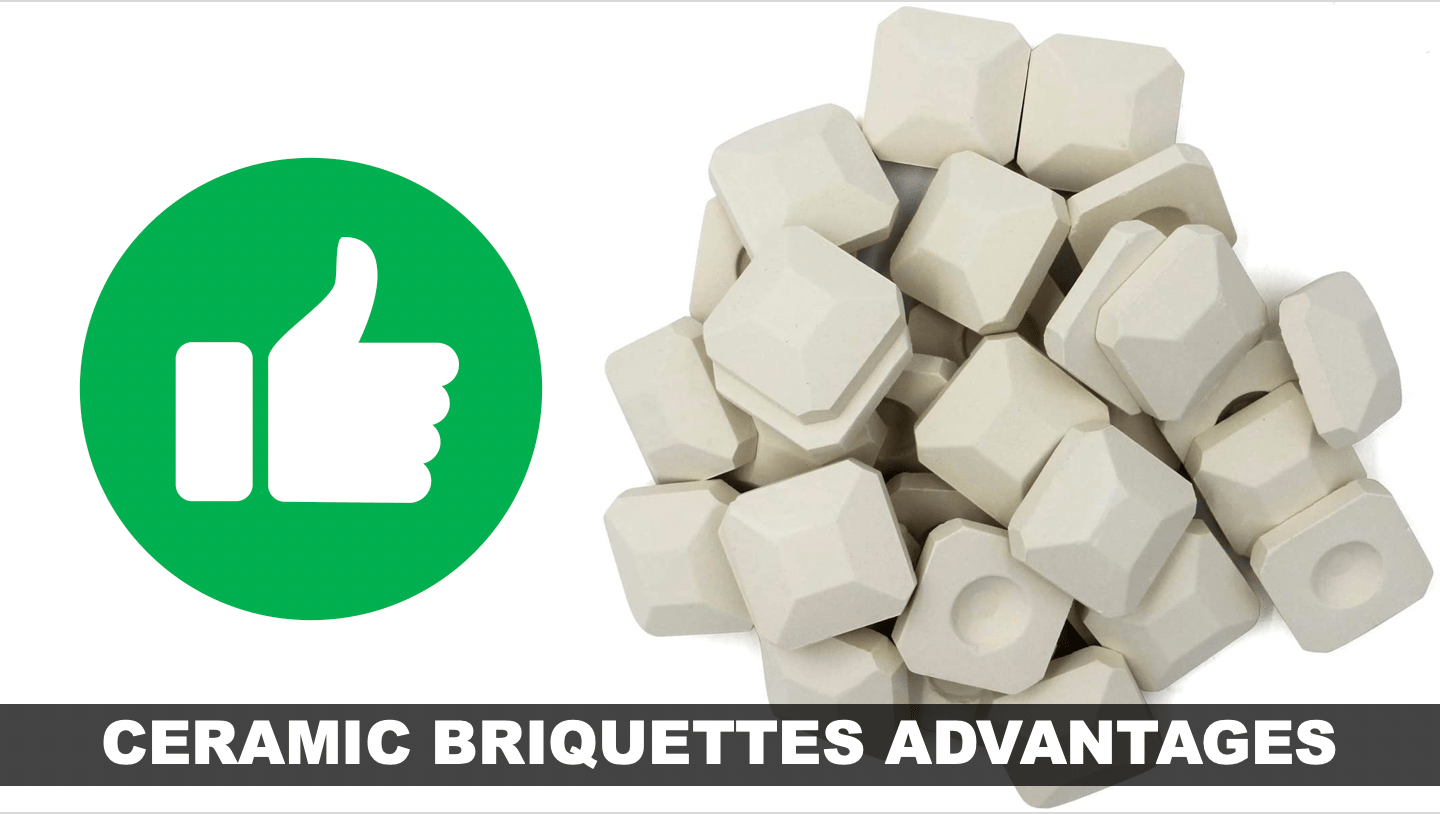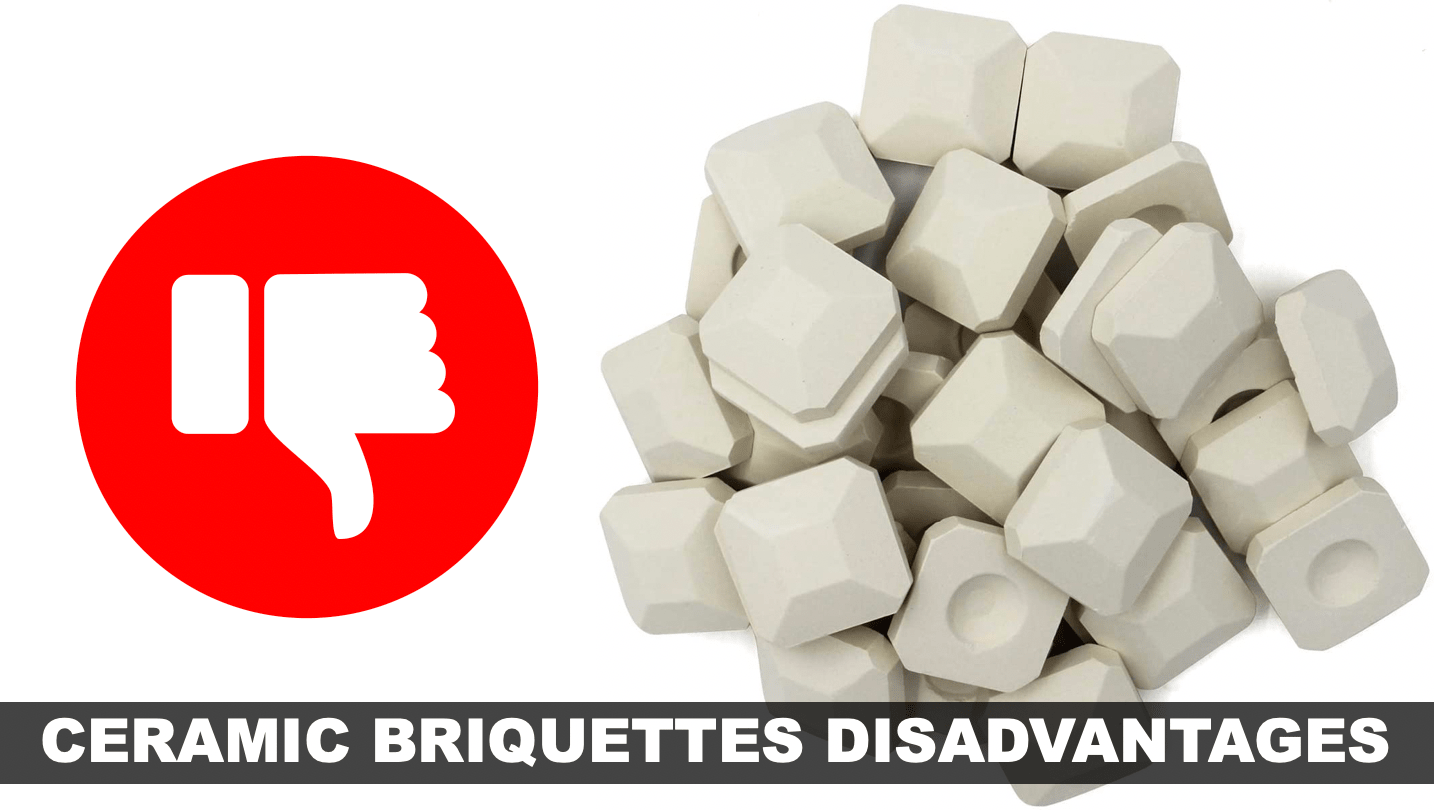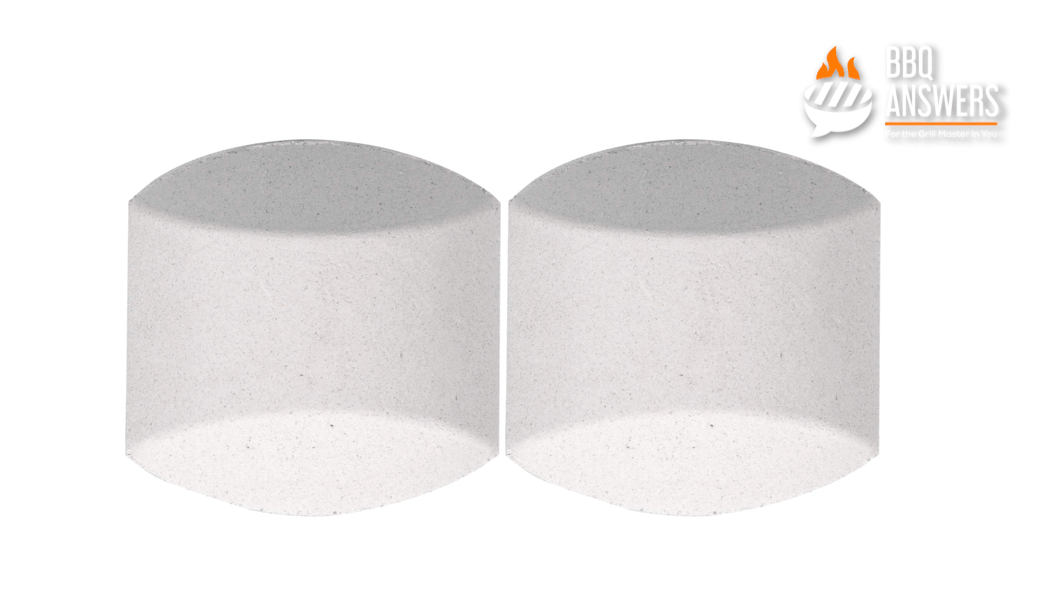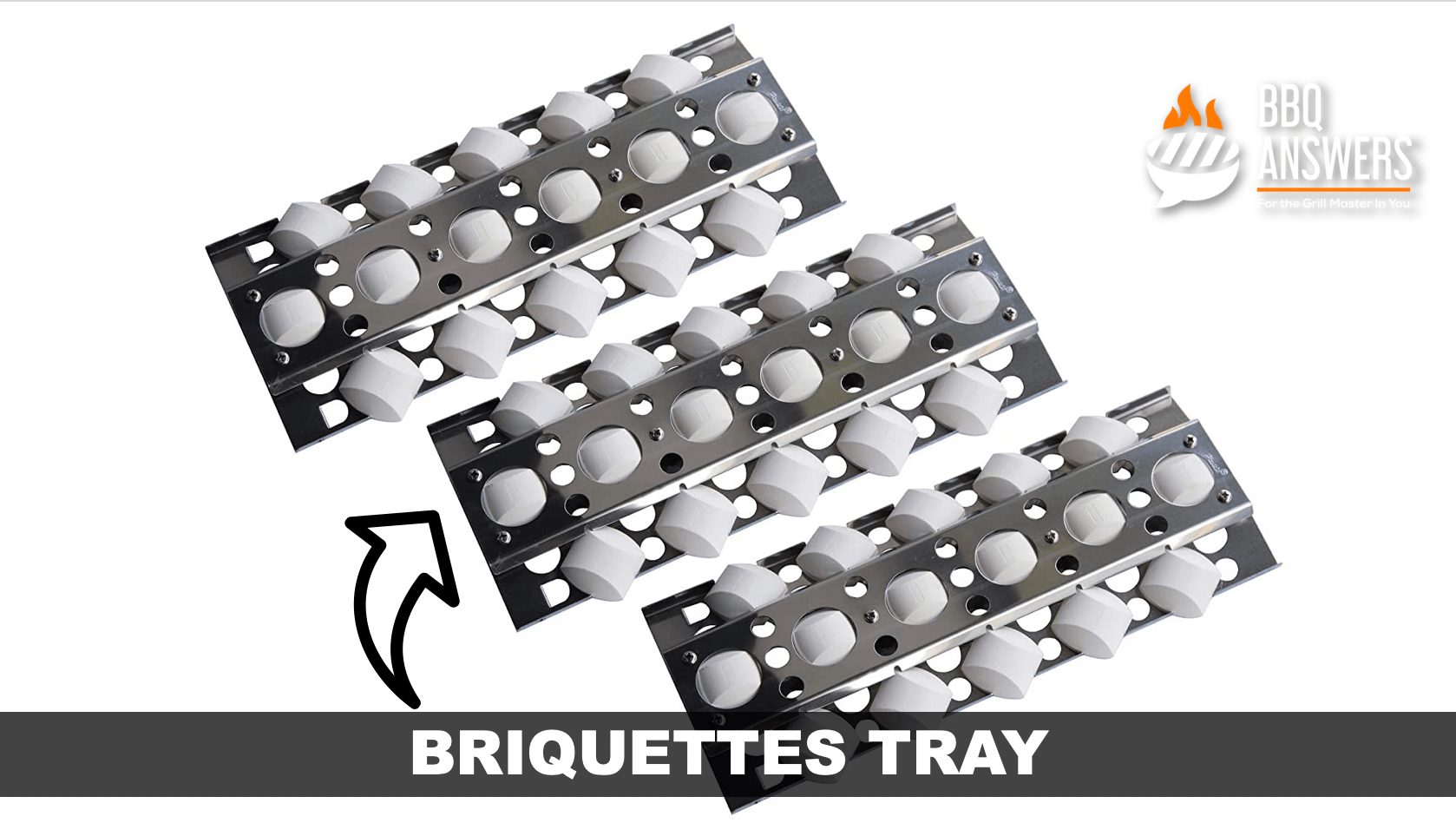
What Are Ceramic Briquettes? All You Need to Know
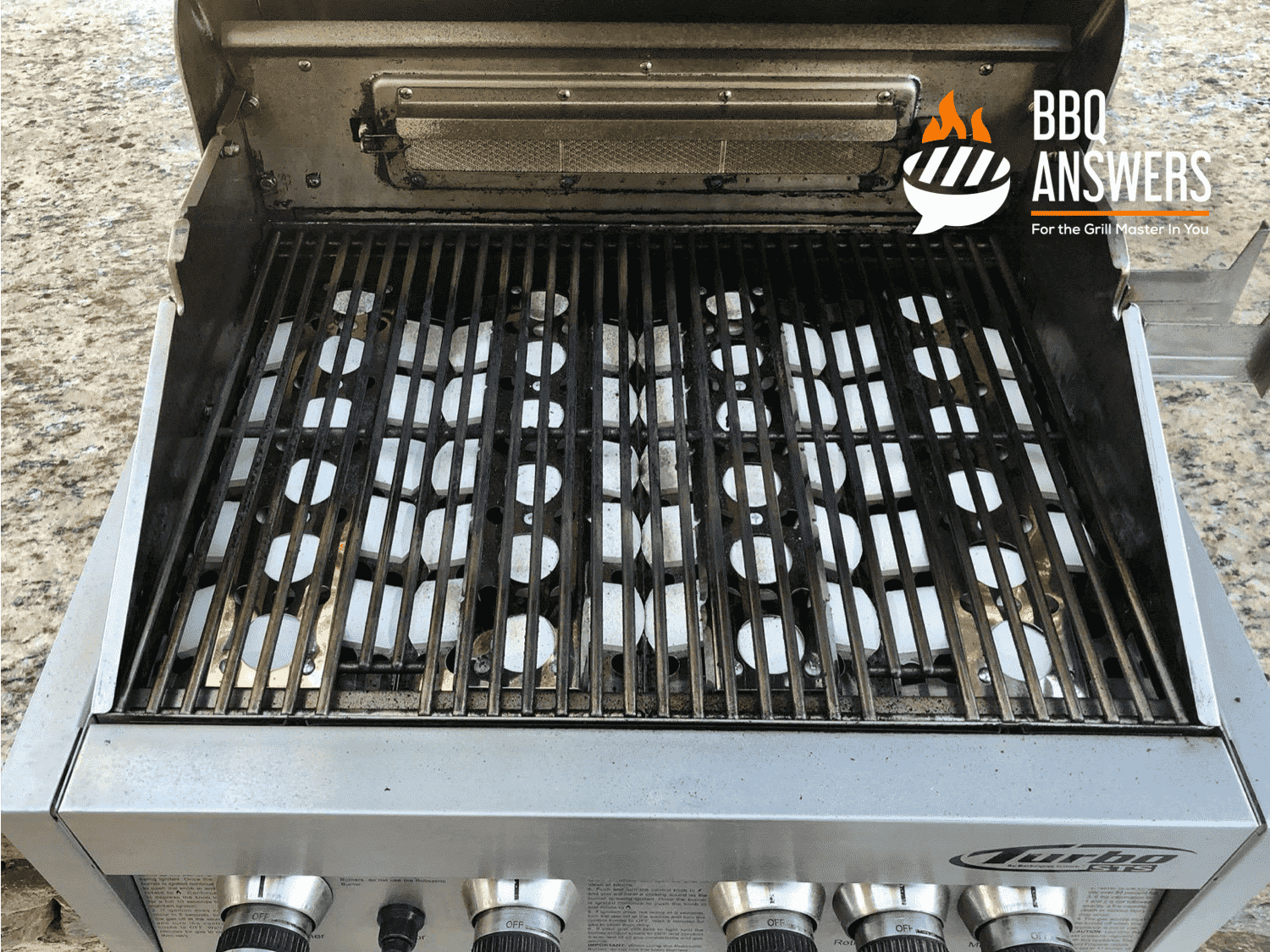
Gas Grills are the most popular grills on the market since they are the most convenient to use. However, they struggle to produce a pronounced smoky flavor in the food. This is because they are not great at producing high heat without burning your food. They also struggle with providing a steady low temperature without a little help.
Ceramic briquettes remedy these problems, making them the perfect accessory for gas grills. In this article, we will discuss why people use ceramic briquettes, their pros and cons, tips on how to use and maintain them, and other frequently asked questions.
Read on to find out more!
What Are Ceramic Briquettes?
Ceramic briquettes are specialized accessories for gas grills. They help gas grills reach higher temperatures while consuming less fuel. They can also hold heat for long, which makes them ideal for even cooking.
Ceramic briquettes get their name from the French word ‘brique,’ which translates as ‘a brick.’ They come in different shapes and sizes, customized for each grill. They are one of the lesser-known BBQ add-ons but are slowly growing in popularity.
Looking for Ceramic Briquettes?
Check out our Recommended Ceramic Briquettes.
Why Do People Use Ceramic Briquettes?
Since gas grills were invented, people have been finding ways to improve the performance of these grills. Ceramic briquettes have proven to be very helpful in reducing fuel consumption, maintaining steady heat, and reaching higher temperatures in gas grills.
Initially, people used Lava rocks to improve gas grills. Despite their many benefits, lava rocks weren’t easy to clean, and they crumbled away as they were used.
To remedy the problems of lava rocks, Flavorizer bars (also known as vaporizer bars, heat shields, or heat tents) were invented in the 1980s. These helped distribute heat evenly and were easy to clean. However, since they were made of metal, they were prone to corrosion, and they weren’t very good at holding heat.
Enter Ceramic briquettes. These didn’t have any of the shortcomings of the previous technology and added excellent flavor to food. They are incredibly efficient at reducing fuel consumption, saving the environment, and your money simultaneously.
Advantages of Using Ceramic Briquettes
If you have been looking for a way to upgrade your gas grill experience or even save on some fuel, here are some reasons you should buy ceramic briquettes:
-
Better Heat-Distribution
Ceramic briquettes prevent the flames from directly hitting the food. Instead, the briquettes heat up and evenly distribute heat throughout the grill. This eliminates cold spots on the grill and results in evenly cooked food.
-
Prevents Flare-Ups
Ceramic briquettes often come with a briquette tray that prevents the flames from coming in contact with the food drippings above the briquettes. This guarantees that you will not have any flare-ups, unlike lava rocks and Flavorizer bars, where grease build-up can cause flare-ups.
-
Great for Searing Meat
The beautiful brown color that searing produces is an absolute necessity in my book. Ceramic briquettes help you get a fantastic sear because they provide consistent temperatures as high as 1800°F to 3000°F (1000°C to 1600°C).
-
Saves Fuel While Slow Cooking
Cooking meat at high temperatures isn’t an option for cooking tougher and larger cuts of meat. You have to prepare the meat low-and-slow, and Ceramic briquettes are excellent for this too!
When cooking low-and-slow gas grills, you typically need to blast your grill on high heat before you can lower the temperature and put the food in. However, most gas grills are made of metal, and they don’t retain heat very well. This means that you will have to turn up the grill often just to maintain the right temperature. Ceramic briquettes, on the other hand, are excellent at holding these temperatures to produce consistent heat for slow-cooking meat. This reduces overall fuel consumption while cooking. -
Long-Lasting
While lava rocks and Flavorizer bars can last as long as two years, they are prone to crumbling and chipping. Ceramic briquettes, on the other hand, have a much longer lifespan since they neither crumble like lava rocks, nor chip and corrode like Flavorizer bars.
-
Easy to Install and Replace
Ceramic briquettes can be easily snapped-on to the tray and, since they are a single unit, you can place and remove them from the grill with ease.
It is very easy to replace installed briquettes too. Ceramic briquettes are fitted onto the tray in a modular fashion, which means you can swap out the briquettes whenever necessary. -
Adds Fantastic Flavor
Ceramic briquettes can produce the smokey, charry smell of barbecue since they can reach high temperatures. This adds tremendous value to gas grills because ‘flavor’ is often the only point where gas grills lose out to other grill types.
-
Easy To Use
Using ceramic briquettes is simple and intuitive. All you have to go is place it between your food and the flame, and you are on your way to grilling mastery!
-
Easy To Clean
Ceramic briquettes don’t have a porous surface, nor are they prone to corrosion. This makes cleaning very convenient. I have explained the cleaning process below.
-
Environmentally Friendly
Ceramic briquettes reduce fuel consumption and make gas grilling tastier, which itself is better for the environment when compared with charcoal grilling.
Disadvantages of Using Ceramic Briquettes
With so many benefits, Ceramic briquettes may seem like the best thing since sliced bread. However, before you are oversold on them, there are a few minor drawbacks you should be aware of.
-
High Cost
A pack of 50 Ceramic briquettes costs between $25-50 briquettes while the trays cost $40-60. However, Ceramic briquettes last longer than lava rocks and Flavorizer bars, so I consider it a worthwhile investment if you plan to use your gas grill often.
-
Excessive Ash
Ceramic briquettes heat up to high temperatures, and the food drippings stay on top of the briquette tray. This causes the food particles to burn up and settle as ash on the briquette tray.
This may look like a mess, but if you are cleaning your Ceramic briquettes the right way, this won’t be a problem. -
Takes Time to Heat Up
Since Briquettes are made of ceramic, they take a little longer to heat up than lava rocks, and Flavorizer bars. However, once it heats up, it holds the heat for a long time, which is excellent for cooking.
Pitmaster Tip:
Prep the ingredients while waiting for the briquettes to come up to temperature.
Ceramic Briquettes vs. Ceramic Grill Tiles
When shopping for ceramic briquettes, you are bound to get recommendations for Ceramic Grill Tiles. That’s because both of them are ceramic-based heat diffusion accessories for gas grills.
This often causes confusion because people often wonder if both these ceramic heat diffusers work similarly. I want to clear this up without further ado:
Pros and Cons of Ceramic Briquettes
Ceramic briquettes are often very small (between 2 and 3 inches) and are available in various configurations. They can be four-sided, six-sided, eight-sided, and oval. They can also have a flat body, or have a raised, diamond-like shape.
They are typically the ones that are used with grill trays.
Benefits of Ceramic Briquettes:
- They are easier to clean
- They reach higher temperatures
- They take less time to heat up
- They guarantee no flare-ups when used with briquette trays
- They are stronger and last longer than Ceramic Grill Tiles
Limitations of Ceramic Briquettes:
- They don’t hold heat as well as ceramic grill tiles since they aren’t as thick
- They are more expensive than Ceramic Grill Tiles
- You may not find briquette trays that fit every grill size
Pros and Cons of Ceramic Grill Tiles
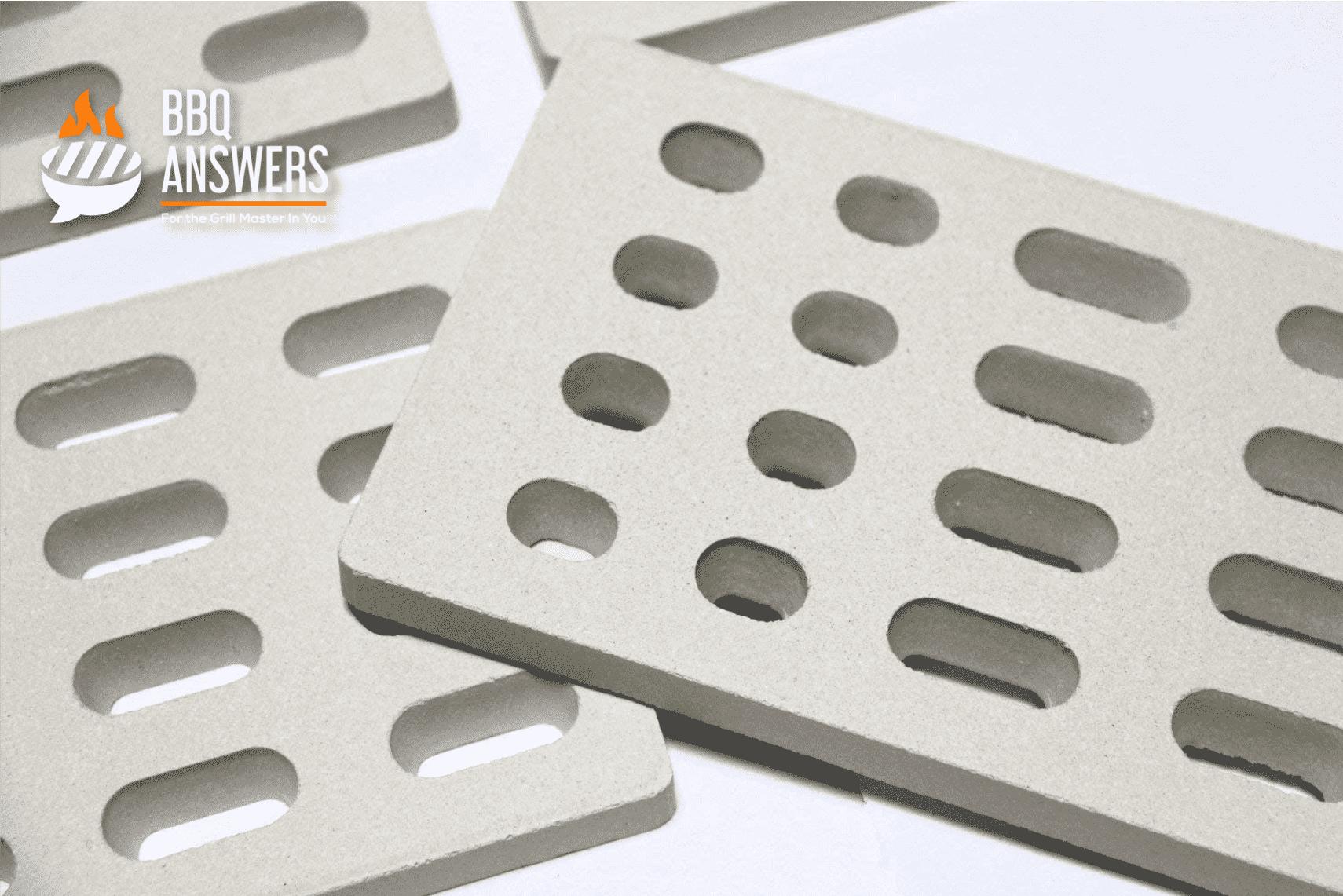
These are larger rectangular shaped tiles with many holes across their surface. These tiles are generally much thicker than Ceramic briquettes.
Benefits of Ceramic Grill Tiles:
- They hold heat better than Ceramic Briquettes
- They are less expensive than Ceramic Grill Tiles
- You can make them fit any grill size since the tiles can be broken using your hands
Limitations of Ceramic Grill Tiles:
- They are not as easy to clean
- They reach comparatively lower temperatures
- They take more time to heat up
- Flare-ups are possible because the holes in the tiles let the flames come in contact with the food drippings
- They are not as strong and have a shorter life than Ceramic Briquettes
Which is the Best Barbecue Heat Diffuser?
Read this article to know the answer. We compare Lava Rocks, Flavorizer bars, Ceramic Briquettes, and Ceramic Grill Tiles.
How to Use Ceramic Briquettes?
So you’ve grabbed one of our recommended ceramic briquettes, and now you want to start using them. Here’s what you need to do to upgrade your grilling experience.
Buy the Right Products
For barbecuing, with ceramic briquettes, you need two things:
Briquette Tray
The briquette trays must fit inside your grill. Opt for a stainless steel tray that has a tent-like shape since these ensure better thermal efficiency. If you choose a Cast Iron briquette tray, it will hold heat better, but it will corrode and need a lot of maintenance. Here are my recommendations for Briquette Trays.
Note:
If you don’t want to use a Briquette Tray, you can place the briquettes on the charcoal fire rack. However, Briquette Trays will always be the more convenient option.
Ceramic Briquettes
Make sure the briquettes fit easily into your briquette tray. Buy briquettes from a trusted brand only since generic products are often of poor quality.
Looking for Ceramic Briquettes?
Check out our Recommended Ceramic Briquettes.
Set Up The Grill
First, install the ceramic briquettes onto the briquette tray.
Then install the ceramic briquettes in three simple steps:
- Remove your grill rack and Flavorizer bars (this is an excellent opportunity to clean them).
- Fix your briquettes on the briquette tray, and fix the tray in the rack holder above the burner. If you don’t want to use a briquette tray, you can position the briquettes in the charcoal tray. Spread them out evenly for the best results.
- Reposition your grilling rack and proceed to the next step.
Get Grilling
You can now fire up your grill. Once you notice that your briquettes are growing with heat – you can get grilling. Your delicious meal is now just a few minutes away!
Grilling Safety
When grilling with ceramic briquettes, remember that the temperatures can get very hot. Therefore, it is essential to:
- Follow the local fire safety guidelines
- Understand BBQ gas Bottle Safety
- Always use personal fire protection equipment
Ensure appropriate grill placement – away from flammable items, children, and pets.
How to Clean Ceramic Briquettes?
As in cooking, maintaining hygiene is a must while grilling. If your ceramic briquettes are not cleaned, the food grease and particles cling to the briquettes surface. This can create problems like attracting insects and rodents, food contamination, and a decrease in the briquettes’ performance.
To avoid these problems and ensure that your ceramic briquettes last you long, it is best to clean your briquettes after every cook.
Here are the steps for cleaning your ceramic briquettes:
- Once you are done cooking, and the grill has cooled down, wipe off the food particles with a dry paper towel and turn the briquette tray over. If you are not using a briquette tray, turn each briquette over so that the greasy surface is pointing downwards.
- Crank up the heat and shut the grill lid. Leave it like that for 15-20 minutes.
- This should get rid of all the food residue. If not, use a wire brush scrub off any remaining residue.
You should be done at this point, but if you want to clean the briquette tray, clean them as you would your grill grates. Here is how you clean your briquette tray:
Pitmaster Wisdom:
Some briquettes should never be cleaned with water, so be sure to read the manufacturer’s instructions before wiping down your briquettes.
When Is It Time To Replace Your Ceramic Briquettes?
Ceramic briquettes are durable and long-lasting, but like everything else on earth, it won’t last forever. Here are some signs that you should replace your Ceramic briquettes:
- The briquettes begin to crack and crumble
- The briquette has stubborn grease that refuses to come off even after cleaning. If you don’t use briquette trays, this will manifest as flare-ups
- The food juices seem to have eaten into the briquette producing a foul smell even after cleaning
Don’t put off replacing your briquettes as this will only cause flare-ups, char your food, and dampen your grilling experience.
What Can I Replace My Old Ceramic Briquettes With?
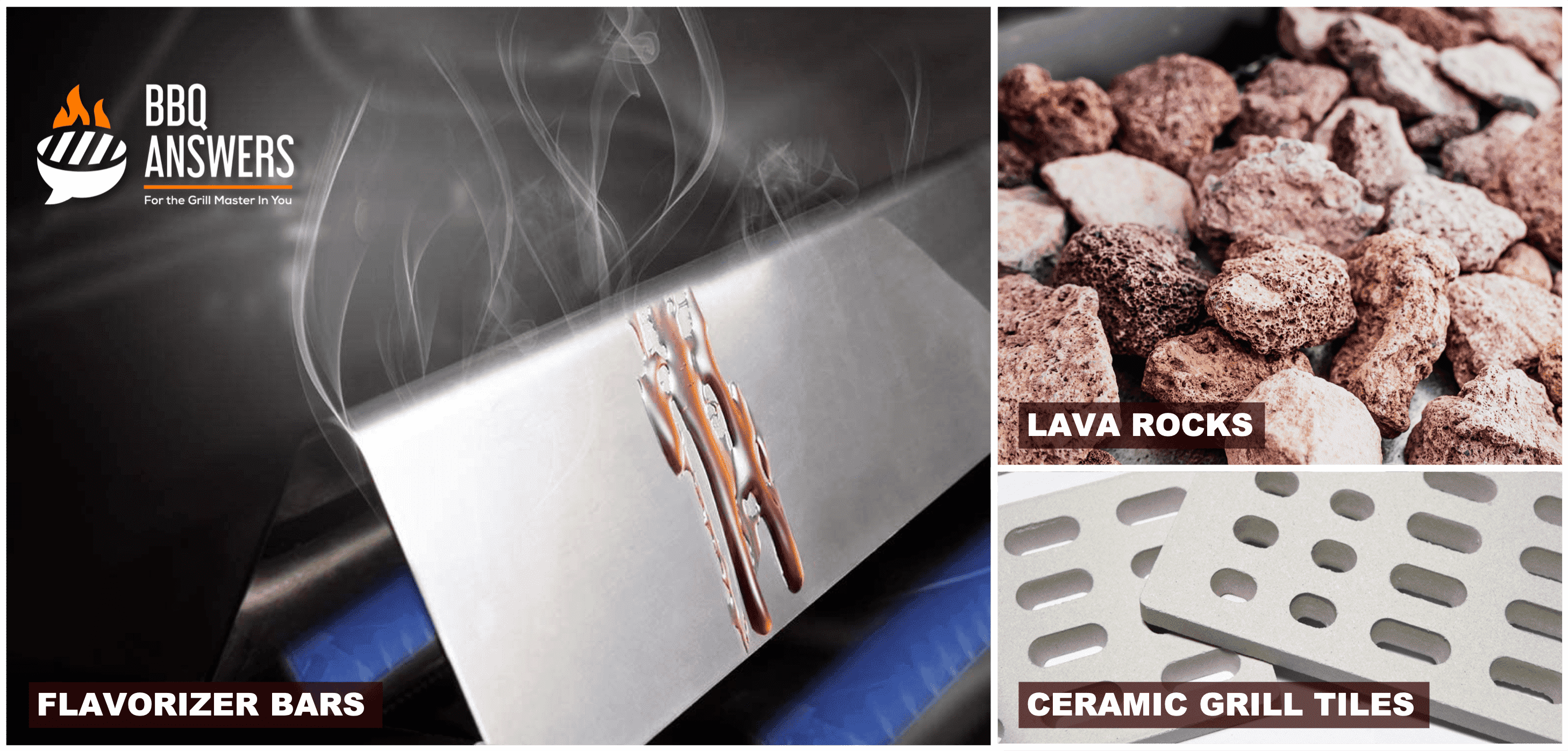
The most common replacement for ‘Old Ceramic Briquettes’ is ‘Replacement Ceramic Briquettes.’ You can also choose from the following:
Read this article to see a detailed comparison between these heat-diffuser alternatives.
Frequently asked questions:
What Can You Cook With Ceramic Briquettes?
From a delicious pizza to frozen chicken, you can cook anything using ceramic briquettes. Using briquettes ensures that meat, potatoes, veggies, lasagnas, and even fruits like pineapple and peaches can be grilled with ease.
How Long Do Ceramic Briquettes Last?
With proper maintenance, quality ceramic briquettes can last you about 4-5 years, even with regular use. Here are some high-quality ceramic briquettes we recommend.
Do I Need Briquettes In A Gas Grill?
No, briquettes are not required to run a gas grill. But if you’re looking for a way to upgrade your regular grill, then ceramic briquettes are a great choice!
Are Ceramic Briquettes Toxic?
No, ceramic briquettes are not toxic and completely safe to use for grilling. All trusted brands are made with food-grade materials. Check out the recommended ceramic briquettes here.
Can Ceramic Briquettes Be Cleaned?
Yes, ceramic briquettes can be cleaned. I recommend cleaning your briquettes after every use by following these steps.
Are Ceramic Briquettes Worth It?
Yes, ceramic briquettes are worth it. They last long, they consume less fuel, and they are easy to work with. If you want a detailed comparison between the various heat diffusers (lava rocks, Flavorizer bars, etc.), read this article.
Can You Use Ceramic Briquettes In Gas Grill?
Yes, ceramic briquettes are made to be used in gas grills. All you will need is a grill rack or briquette tray to place them on.
Looking for Ceramic Briquettes?
Check out our Recommended Ceramic Briquettes.
Final Thoughts
Ceramic briquettes are meant to make grilling easy, fun, and exciting. Adding them to your gas grill can change how you cook and change how your food tastes.
I hope that this article helped answer all your questions about BBQ briquettes. If you have any questions, comments, or compliments, please do leave them in the comment section below.
Want to learn more about barbecuing? Subscribe to BBQanswers.com by clicking the bell icon at the bottom-left of the page.















